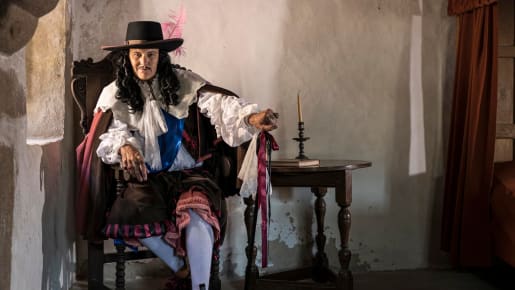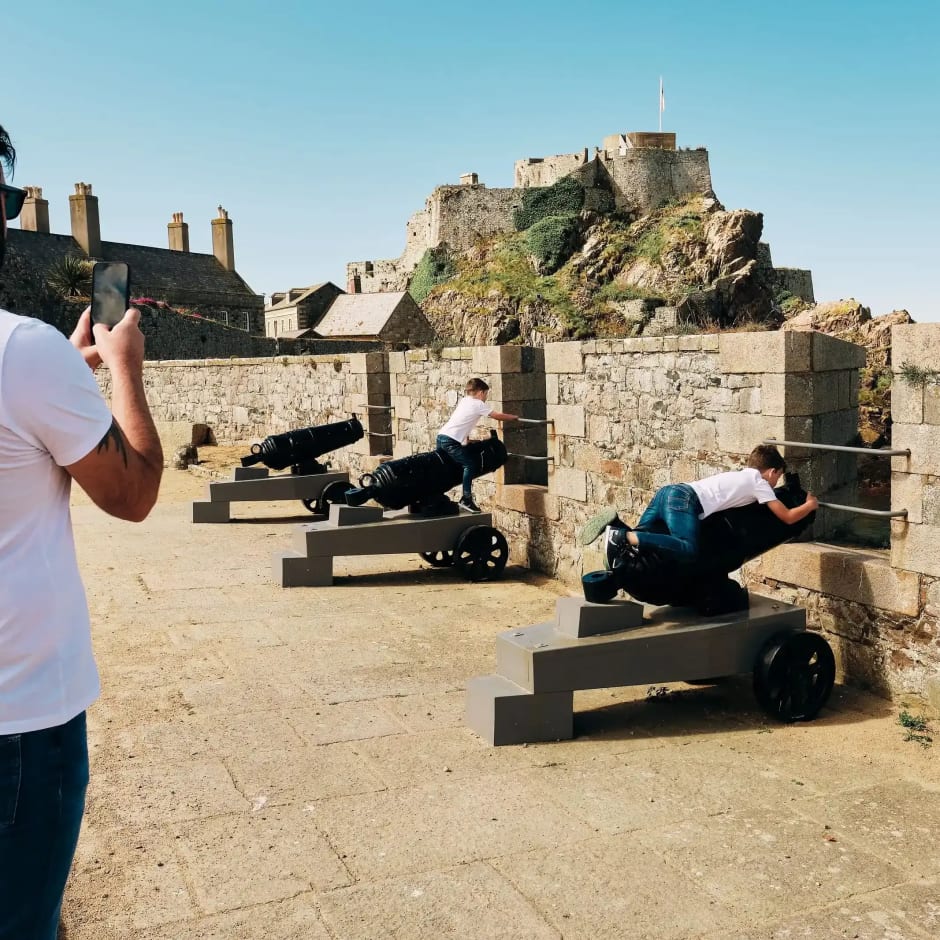
We are restoring Elizabeth Castle to ensure it is protected for generations to come
The Castle sits on an islet about half a mile off Jersey’s south coast by St Helier Harbour and has watched over the Island for more than 400 years. Built across 24 acres and 15 centuries, it is steeped in history. The Castle is the biggest heritage site we look after and our most popular site during the summer season.
We have begun an exciting new, long-term restoration project at Elizabeth Castle, which is one of the most iconic landmarks in Jersey and a symbol of the Island’s incredibly rich history. Watch the video to find out more about our long-term plans for the Castle.
The Castle has many chapters to its story, including residents such as Sir Walter Raleigh, King Charles II and German occupying forces, but its history dates back as far as the 6th century to St Helier, who Jersey’s capital is named after. A hermit called Helibert lived in the hermitage on the islet where the Castle is built. He was murdered and later made into a saint called St Helier. Islanders make an annual pilgrimage to the hermitage and it is a fascinating part of the Castle grounds for visitors to explore.
The first building on the islet was an abbey, named after Helibert and founded in 1155. It was soon downgraded to a priory and later abandoned. Fast forward to the late 16th century and a fortress was being built, taking over the main defence of Jersey once gunpowder and cannon were introduced and the medieval castle of Mont Orgueil on the east coast was no longer up to the job. Raleigh, who was Governor of Jersey from 1600-1603, later named the new castle after his Queen; Fort Isabella Bellissima, or Elizabeth Castle.
The Castle protected St Helier and offered a safe anchorage for merchant vessels, and also gave refuge to Charles II – the Prince of Wales at the time – in 1645 during the English Civil War. It was extended throughout the 17th and 18th centuries and continued to be a military garrison until 1923, when it was sold by the British Government to the States of Jersey. Most recently, the Castle was re-fortified by German forces during the Second World War.

Living history at the Castle includes King Charles II
Today, Jersey Heritage looks after Elizabeth Castle on behalf of the people of Jersey and the Island’s government has provided us with vital funding to invest in a major, long-term restoration project, which is the latest chapter in the fortress’ history.
There are more than 30 historic buildings in the grounds of the Castle and, although general conservation work to maintain the site as a whole is ongoing, some of the key buildings need more help – this is where the restoration project comes in.
Phase One focuses on the Georgian Military Hospital and Coal Store, and the 18th century Officers’ Quarters. Planning permission has been granted for both of these projects and preliminary work has begun, including the gathering of essential conservation information for the restoration process.
Built in 1735, the Officers’ Quarters was previously used by Jersey Heritage as an exhibition space. As part of the project, the building, which faces into the Parade Ground at the heart of the Castle’s grounds, will be restored and developed and returned to its original use as accommodation. At the moment, it is closed to the public but when it reopens, it will provide opportunities for the Castle to be used in different ways, including by groups during the winter months when the Castle is currently closed to visitors.

The Castle and all it's buildings. Image thanks to Bam Perspectives.
The Georgian Military Hospital dates from the early 19th century and is one of the first buildings that visitors see when they enter the Castle. Our knowledgeable Tour Guides stop here to share some of its fascinating history but the building is currently too dangerous to allow visitors access.
The restoration project will see the Hospital restored and opened to the public for visitors to explore. For now, you can take a virtual tour of the Hospital Block at Elizabeth Castle with our knowledgeable Volunteer tour guide Sue Corbel.
The large 19th century Coal Store by the Hospital is also currently unused. It will be refurbished to create a multi-purpose function and meeting room, with toilet and kitchen facilities. This will provide a location for meetings and events, adding another facet to the Castle.
The Guard House at the entrance to Elizabeth Castle houses an exhibition to explain the restoration project to visitors and soon they’ll be able to see the progress for themselves as the project gets fully underway.
Exciting times lie ahead for this iconic Castle, which remains an integral part of the Island’s story.

The entrance to Elizabeth Castle










